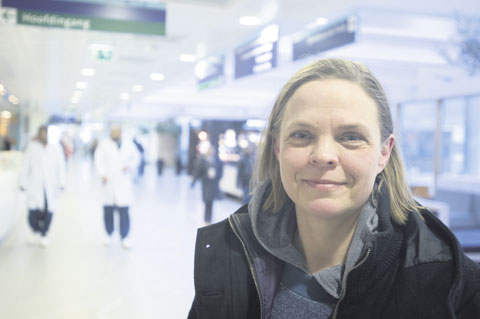As an architect, I’m interested in the role that architects have played, and still play, in the development of hospitals. What did the architects design and why? I study this through case studies, by looking at and reading about architectural objects.
“Architectural objects can teach us about architectural means, craftsmanship, typological transformations and shifting architectural panoramas of style. But they can also be read as a manifestation of who was in charge, where the money came from, hierarchies and class issues. They are not the result of one mind alone. It is this complex situation – and collective quality – that I want to accentuate in my research. Architecture is not only physical form; it’s also a social construction. To give an example: who gets the largest room with the nicest view and who gets to sit in the basement? Circumstances that can create conflicts between staff members or support those that already exist. Throughout history nurses have become more educated and emancipated. In the beginning their main task was to feed patients and clean their linen. Now they are part of the scientific team. With the growing authority of nurses we see changes appear in the design of their physical environment.
“What’s interesting to consider is that hospitals are a relatively new phenomenon. In Denmark the first ‘real’ hospital opened in 1750 in Copenhagen. But it is not until the 19th century and the development of the medical profession, when it actually became possible to heal patients, that hospital services changed. At its core is evidence-based medicine. To develop and test the theories that define evidence-based medicine, patients are part of an experimental set up. Hospitals are in the first place a medical domain. This has had a huge impact on why hospitals are designed the way they are and why they look the way they look: why hospitals became clinical buildings.
“You want to know whether liberalisation changes the way hospitals are designed? Well increasingly you see corners appear in hospitals, like the one we’re sitting in right now, that are homey with couches and books, to please customers. Patients like to believe that hospitals are designed for patients. But this is largely window dressing. The hospital is the house of medicine. This is a fundamental issue. It is not per se a bad thing. But it should be discussed, and it very often is not.”
“Sinds hier een tijdje geleden een gebouw afbrandde (Bouwkundefaculteit, red.) controleren we extra streng”, zegt een van de twee mannen. “Tijdens de brand stonden ook veel mensen verkeerd geparkeerd. Als ze zich aan de regels hadden gehouden, had de brandweer er misschien wel op tijd bij gekund.”



Comments are closed.